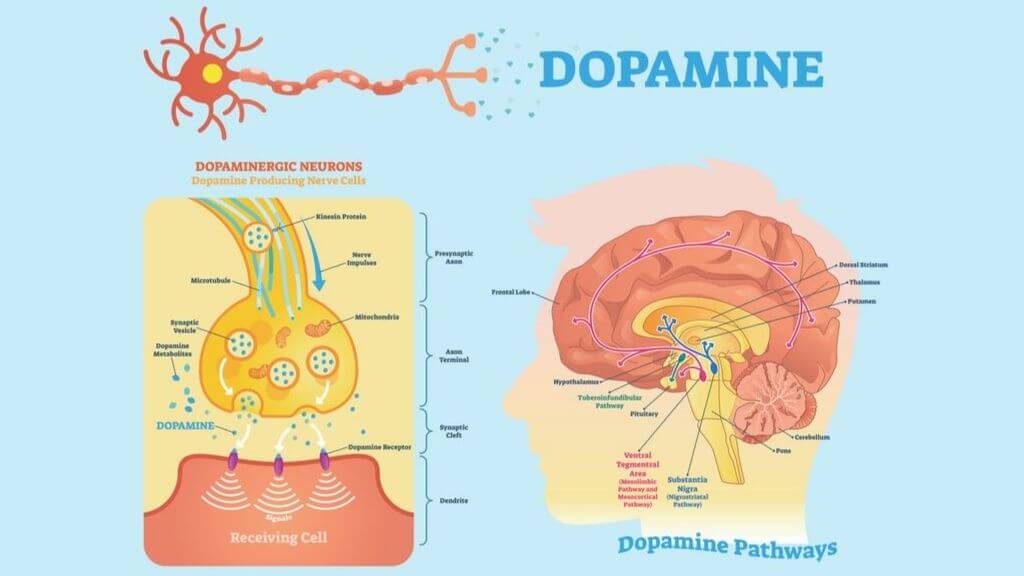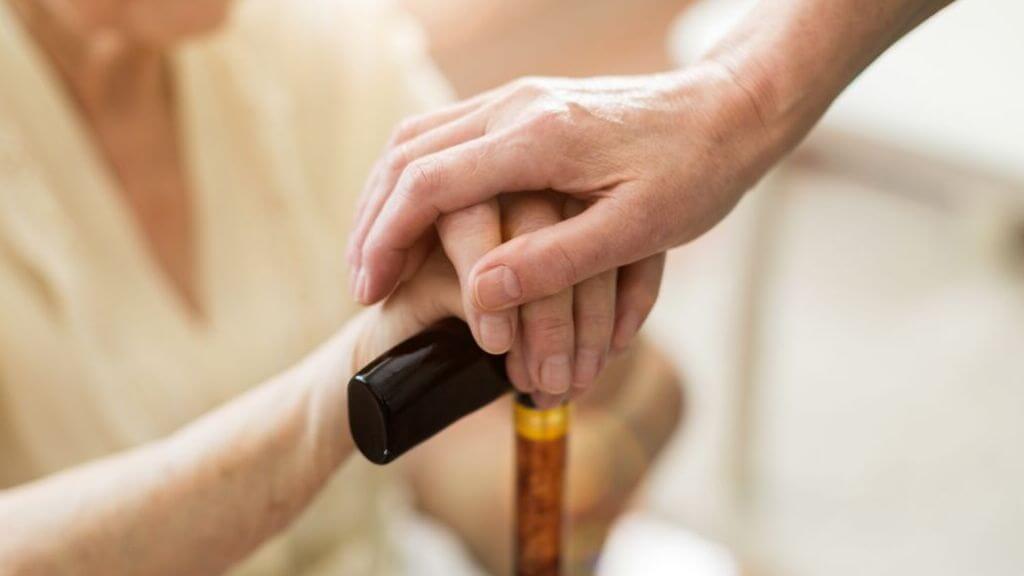Parkinson’s disease is a chronic and progressive neurological condition related to a reduction in dopamine levels. The substantia nigra is the section of the brain that produces dopamine, which is the chemical that makes smooth and coordinated movement possible.
The cells of the substantia nigra die in Parkinson’s disease, causing reduced levels of dopamine in the brain. Parkinson’s symptoms begin to show once dopamine levels have dropped to below 60 to 80 percent.
Parkinson's Disease Causes
It is thought that both genetic and environmental components impact the development of Parkinson’s disease, but the exact cause is unknown. Low levels of dopamine and norepinephrine are linked to the disease, as is the presence of abnormal proteins known as Lewy bodies.
The factors that increase your risk of Parkinson’s disease include:
♦ Sex: Men are more likely to develop the disease.
♦ Race: The disease is more common among Caucasians.
♦ Age: The disease most commonly appears between the ages of 50 and 60.
♦ Family history: Those with family members that have or had the disease are more at risk.
♦ Head injury: People who experience head injuries during their life are more likely to develop Parkinson’s.

Parkinson's Disease Symptoms
The early signs of Parkinson’s disease will show several years before motor problems are detected. These include decreased ability to smell, constipation, voice changes, stooped posture, and cramped handwriting. Once motor symptoms appear, you will notice:
♦ Tremors
♦ Slow movements
♦ Arm, leg, and trunk stiffness
♦ Problems with balance
In addition to motor problems, later symptoms common to Parkinson’s disease include:
♦ A blank facial expression
♦ Muffled speech
♦ Decreased blinking and swallowing
♦ Tendency to get stuck when walking
♦ Tendency to fall backward
Parkinson's Disease Diagnosis: There is no diagnostic test for Parkinson’s disease. Diagnosis typically involves a physical and neurological examination and an analysis of your family and health history.
Imaging tests can be done to rule out other possible conditions. A dopamine transporter scan may also be used to rule out Parkinson’s, but they cannot definitively confirm a diagnosis of the disease.
Treatment for Parkinson's Disease
Treatment typically relies on a combination of medications, lifestyle changes, and therapy. The medications prescribed for Parkinson’s are designed to reduce the severity of symptoms.

Levodopa is one of the most common medications, and it works to increase dopamine levels in the brain. Dopamine agonists are also used, which imitate the action of dopamine on the brain. Anticholinergics are used to reduce rigidity and promote fluid movement.
Parkinson's Disease Diet
Diet can play an important role in the life of a person with Parkinson’s disease. A diet will not treat or prevent the disease, but it can have a significant and positive impact.
By eating foods that naturally increase dopamine levels, you can counteract the reduced levels caused by the disease. The best foods to do this include:
♦ Antioxidants: These prevent oxidative damage to the brain. Some foods rich in antioxidants include nuts, berries, and nightshade vegetables.
♦ Omega-3 fatty acids: These essential fatty acids possess both anti-inflammatory and antioxidant properties, which work to protect the brain from damage. Foods high in omega-3s include fatty fish, flax seeds, and some beans.
♦ Fava beans: These beans contain the natural form of levodopa, which is the same ingredient used in many Parkinson’s medications.
Natural Treatments for Parkinson's Disease
Medication and treatment can help to reduce symptoms, and there are also certain lifestyle changes you can make to improve comfort when living with Parkinson’s disease.
Getting adequate sleep is especially essential since many of the symptoms and pains cause sleep disruptions. Without sleep, your body is weakened, and this will worsen fatigue and pain.

To ensure you get a good night’s rest, try to incorporate the following tips:
♦ Set and stick to a regular sleep routine, even on the weekends.
♦ Get light exercise each day. Yoga is ideal, as it works to target specific muscles to increase strength and mobility. Yoga has even been found to reduce tremors and improve coordination and balance.
♦ Avoid stimulants such as coffee, alcohol, and electronic activity right before bed.
♦ Create a comfortable sleeping environment.
What Are the Variations of Parkinson's Disease?
There are no variations of Parkinson’s disease, but the disease does progress through five distinct stages.
♦ Stage 1: This is the mildest form, and symptoms may not yet be noticeable, or if they are, they do not interfere with daily living. Any symptoms you have will appear on only one side of the body.
♦ Stage 2: Progression from stage 1 can take months or years, and at this moderate stage, you will experience muscle stiffness, tremors, and changes in facial expressions. Symptoms will now appear on both sides of the body.
♦ Stage 3: At this middle stage, symptoms become more noticeable, and new ones appear. They now begin to interfere with your life, as your movement gets noticeably slower and coordination is impaired.
♦ Stage 4: Significant changes occur at this stage, and you will have difficulty standing or walking without assistance.
♦ Stage 5: This is the most advanced stage, and assistance is needed at all times for all activities. Individuals also experience confusion and delusions.
Parkinson's Disease Statistics
♦ An estimated 10 million people have Parkinson’s disease worldwide.
♦ Parkinson’s disease is the second most common age-related neurodegenerative disease after Alzheimer’s.
♦ Approximately 4 percent are diagnosed before the age of 50.
♦ Men are 1.5 times more likely to develop Parkinson’s than women.
♦ Young-onset Parkinson’s disease occurs in about 2 to 10 percent of every one million people.

Parkinson's Disease and Surgery
When people do not respond to medications, therapy, and lifestyle changes, surgical options are available.
♦ Deep brain stimulation involves the implantation of electrodes into specific parts of the brain. A generator then sends out electrical impulses to reduce the symptoms.
♦ Pump-delivered therapy is a pump that has been surgically placed near the small intestine and delivers a combination of medications to reduce symptoms.
Parkinson's Disease and Children
In very rare cases, Parkinson’s disease can appear in children and teenagers. It is known as juvenile Parkinson’s, and it is associated with very specific high-PD genetic mutations.
The symptoms include chronic pain and dystonia, but there are rarely any tremors. With treatment, symptoms can be reduced, but the individual will have the disease for life.
What Is the Long-Term Outlook?
The complications associated with the progression of Parkinson’s can greatly reduce quality of life. There is no cure for the disease, nor can the progression be slowed. The disease itself is not fatal, but the complications can be.
With medications, therapy, and lifestyle changes, you can control symptoms and overcome obstacles. This allows you to live a better quality of life for as long as possible.






